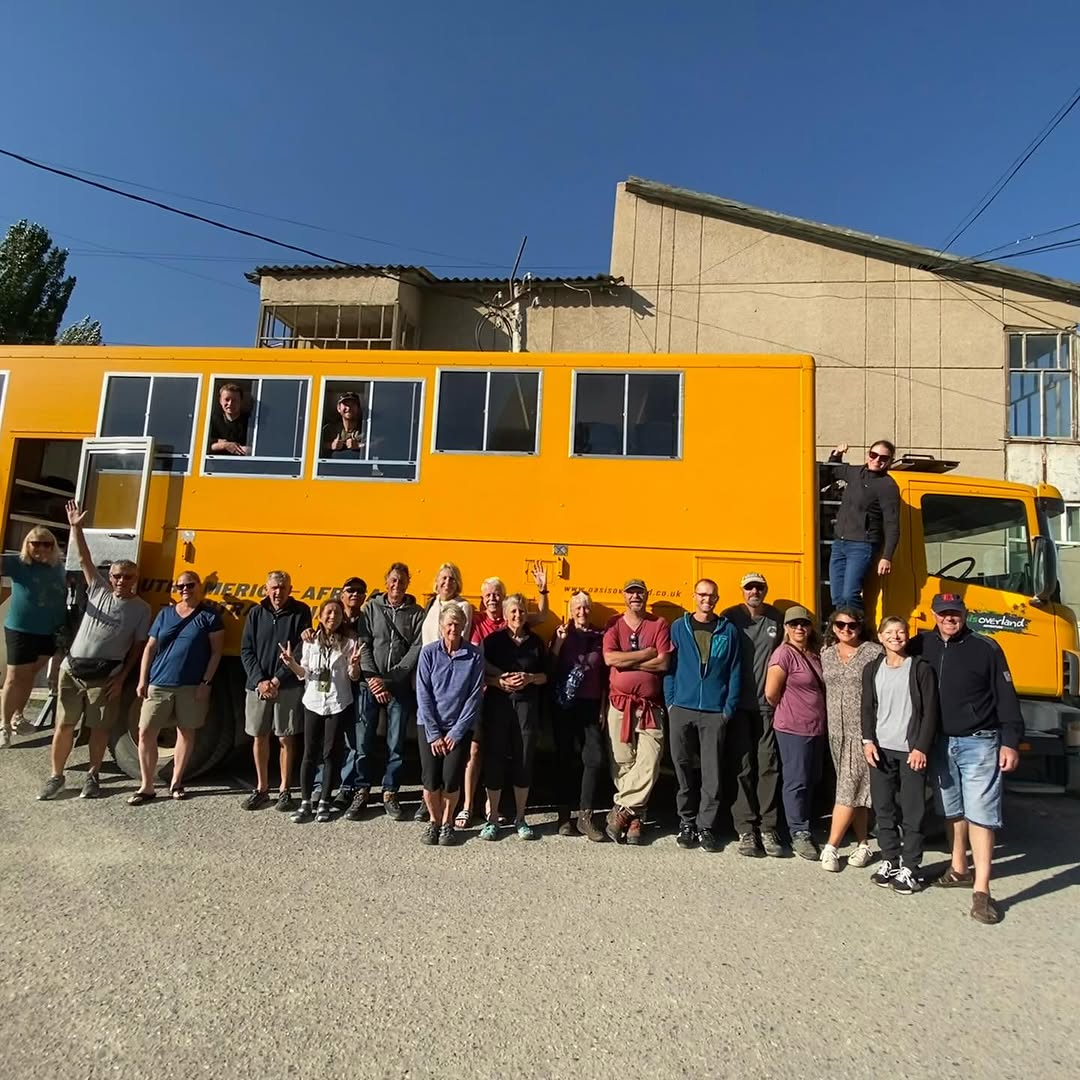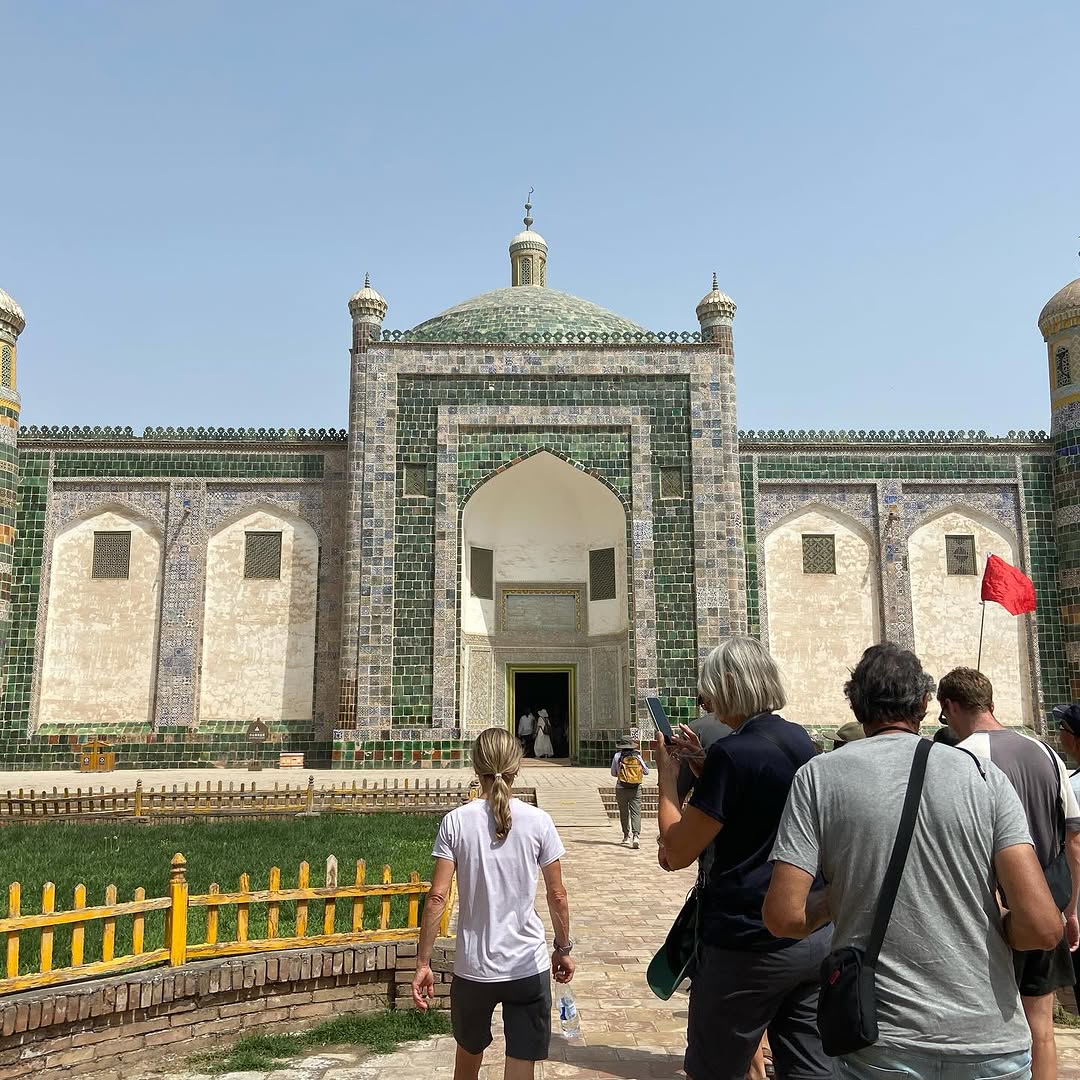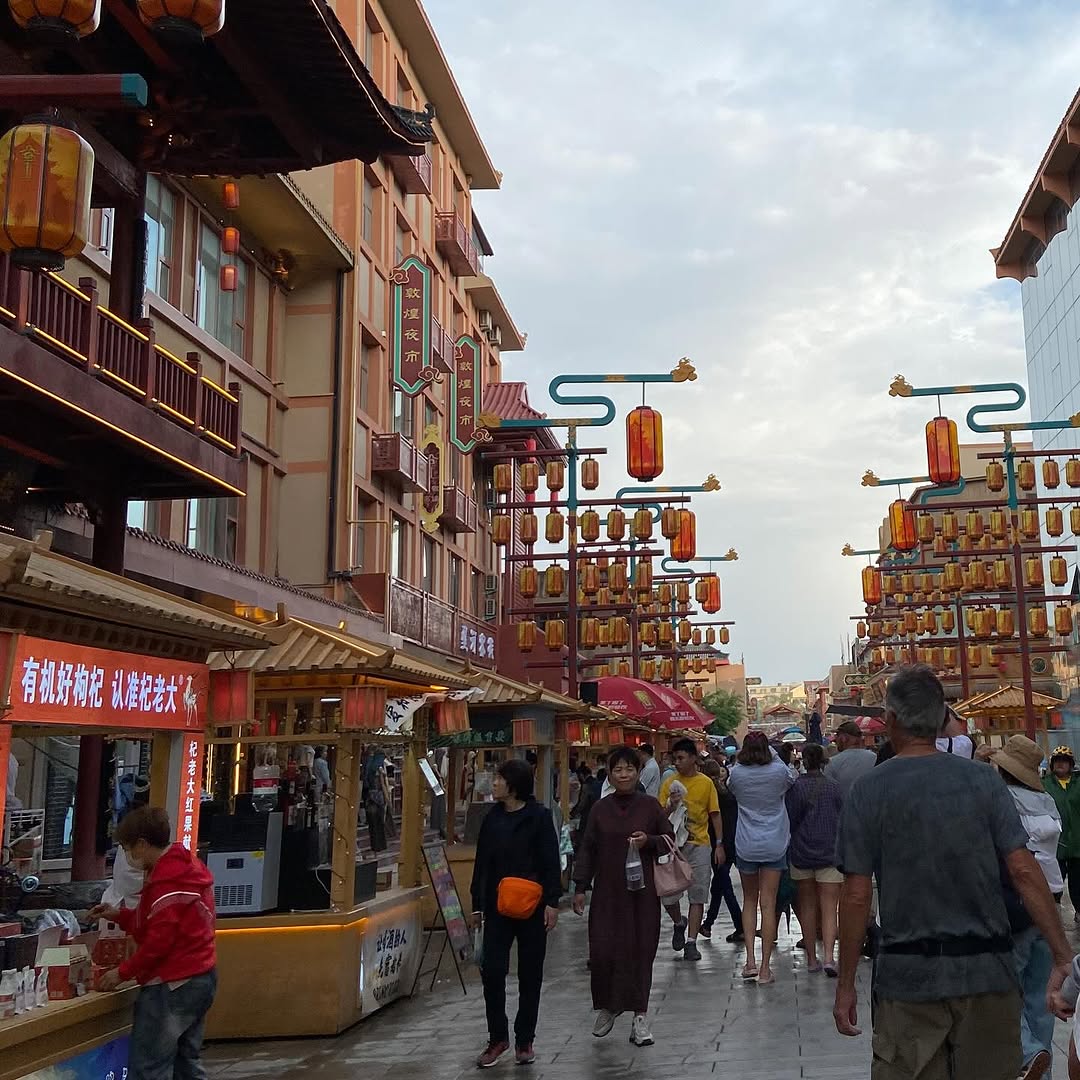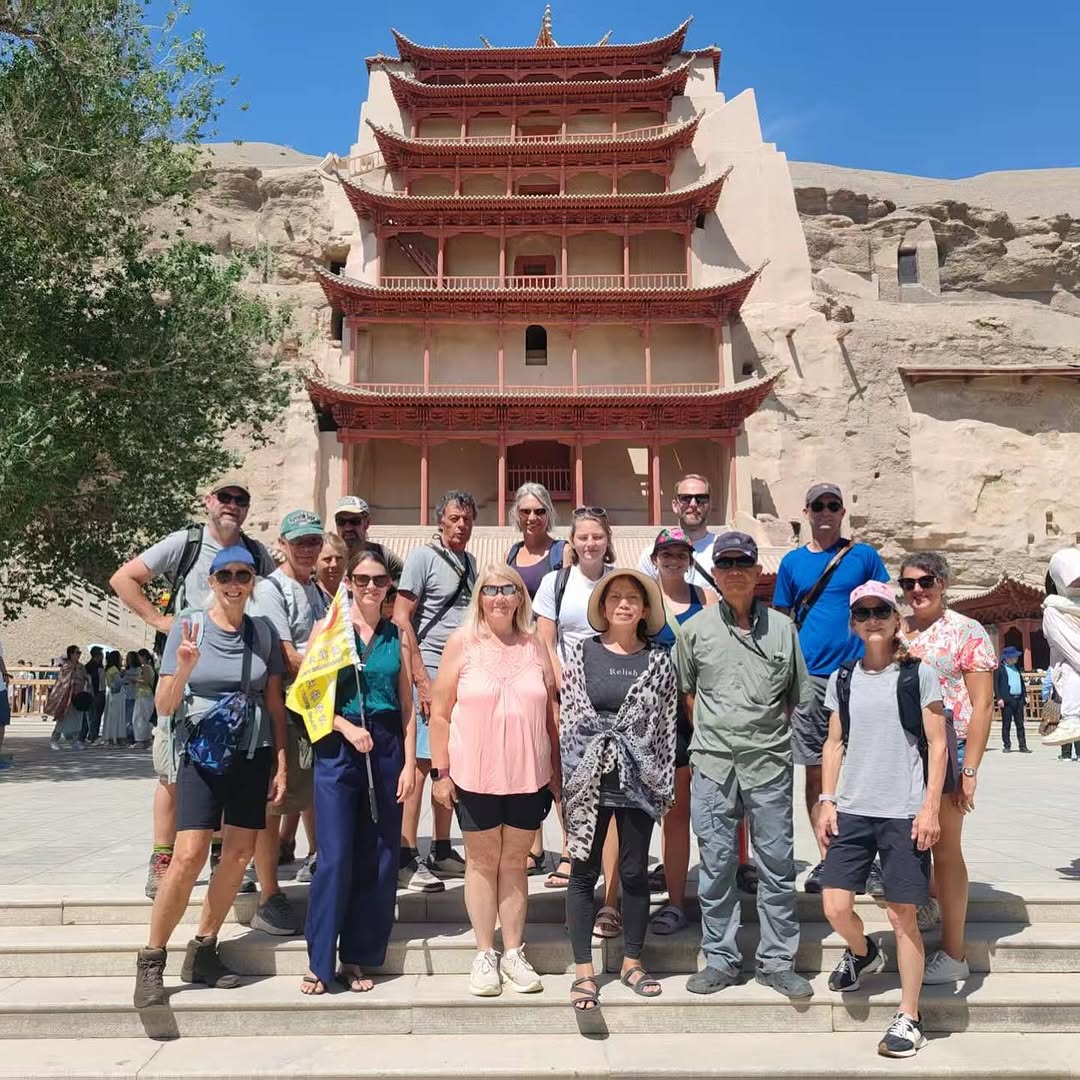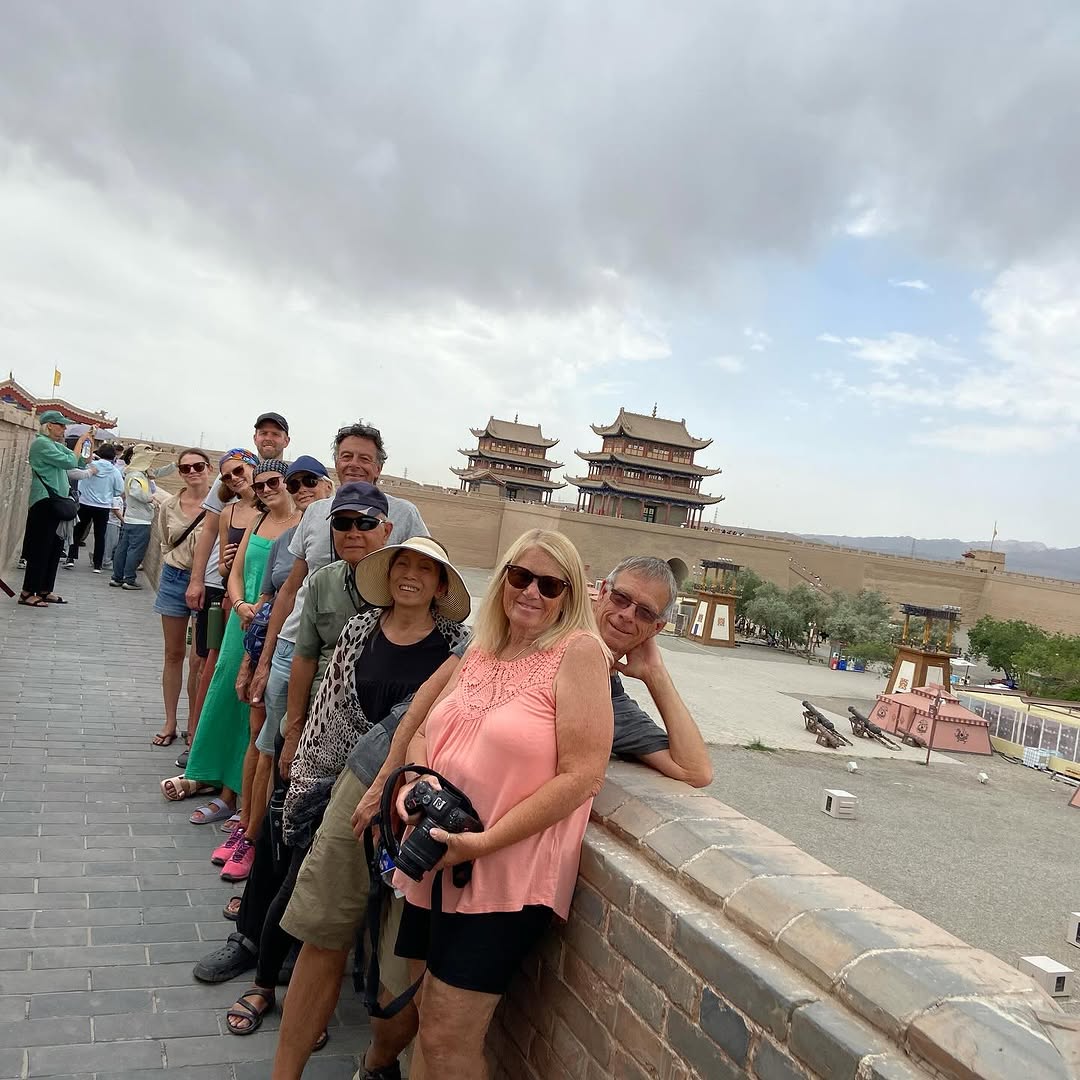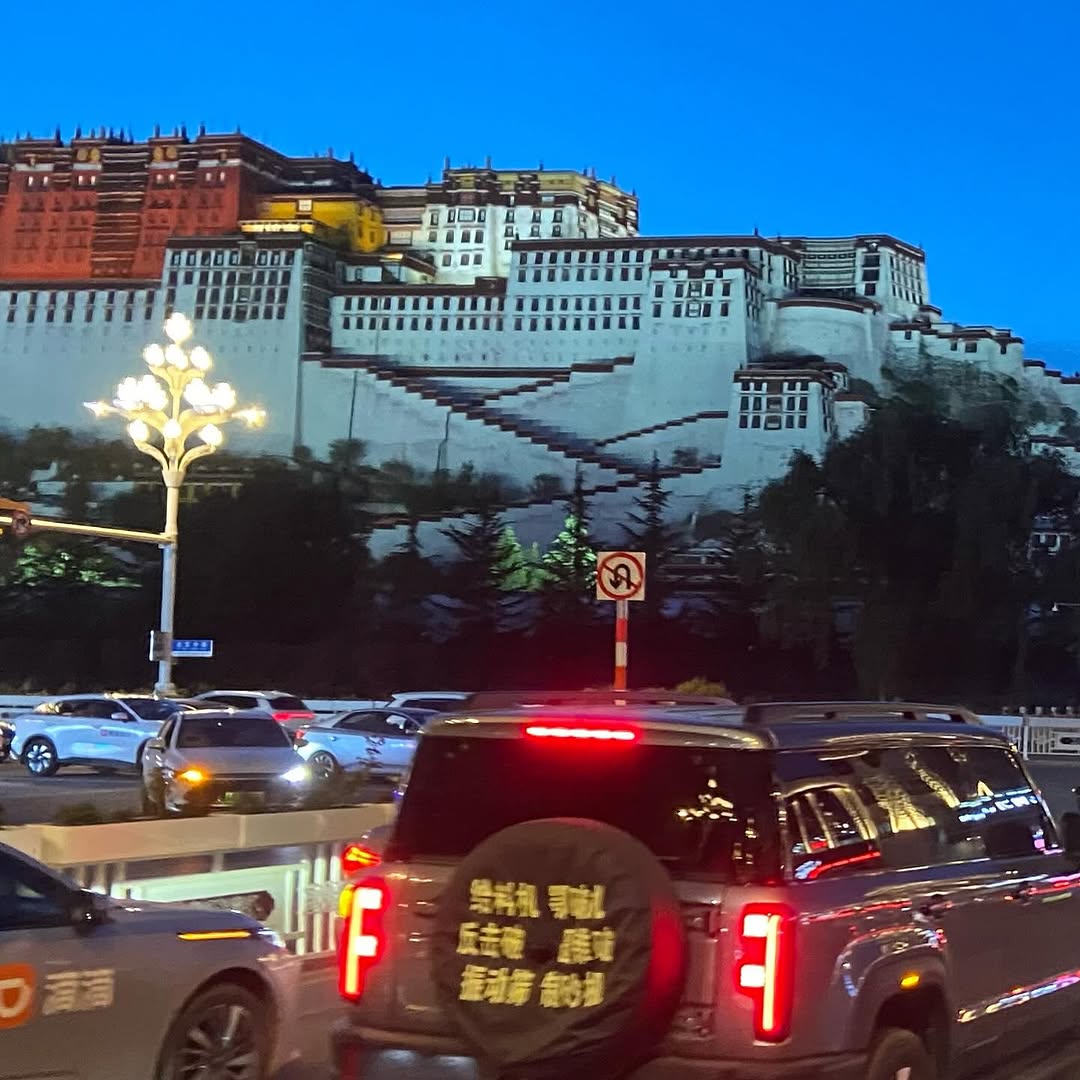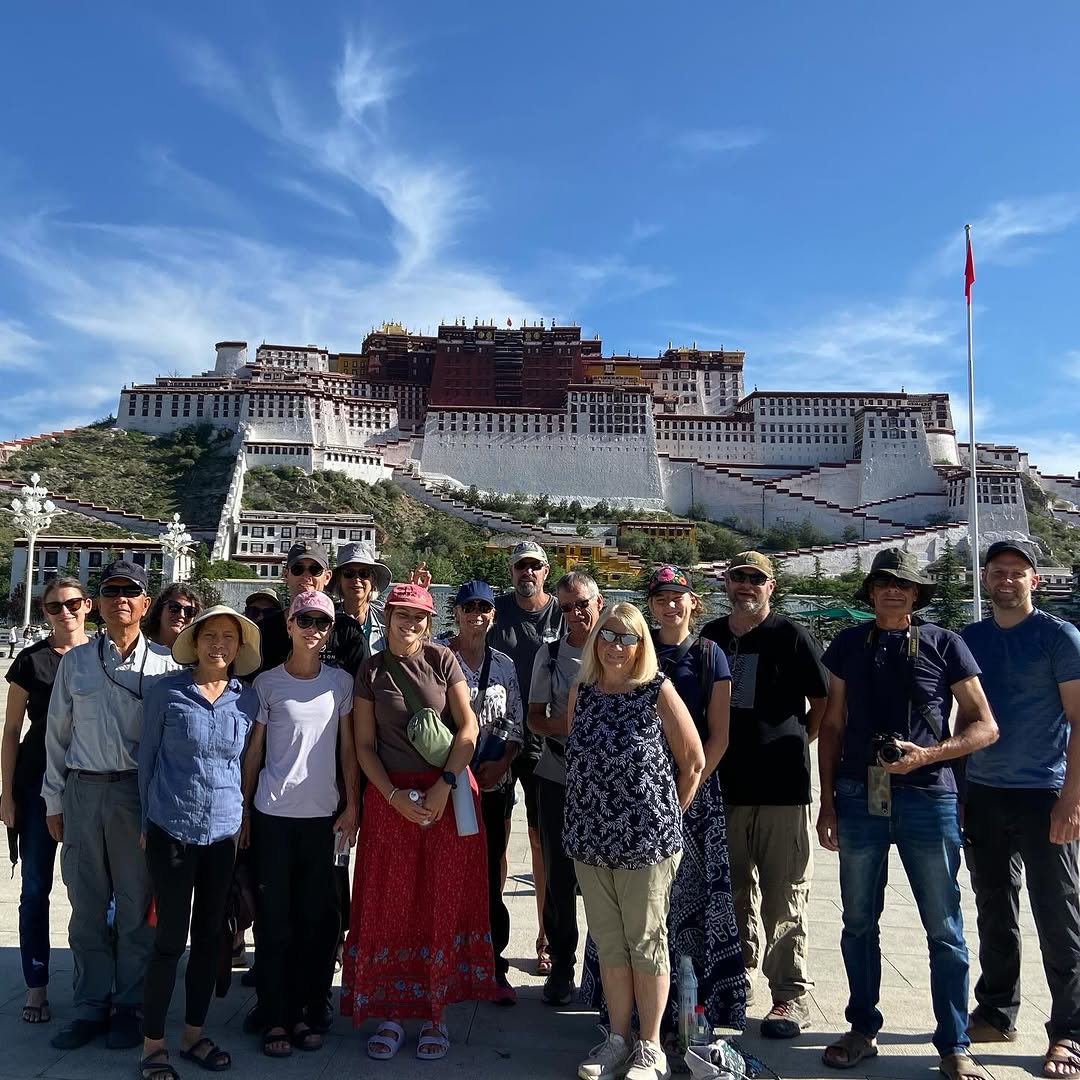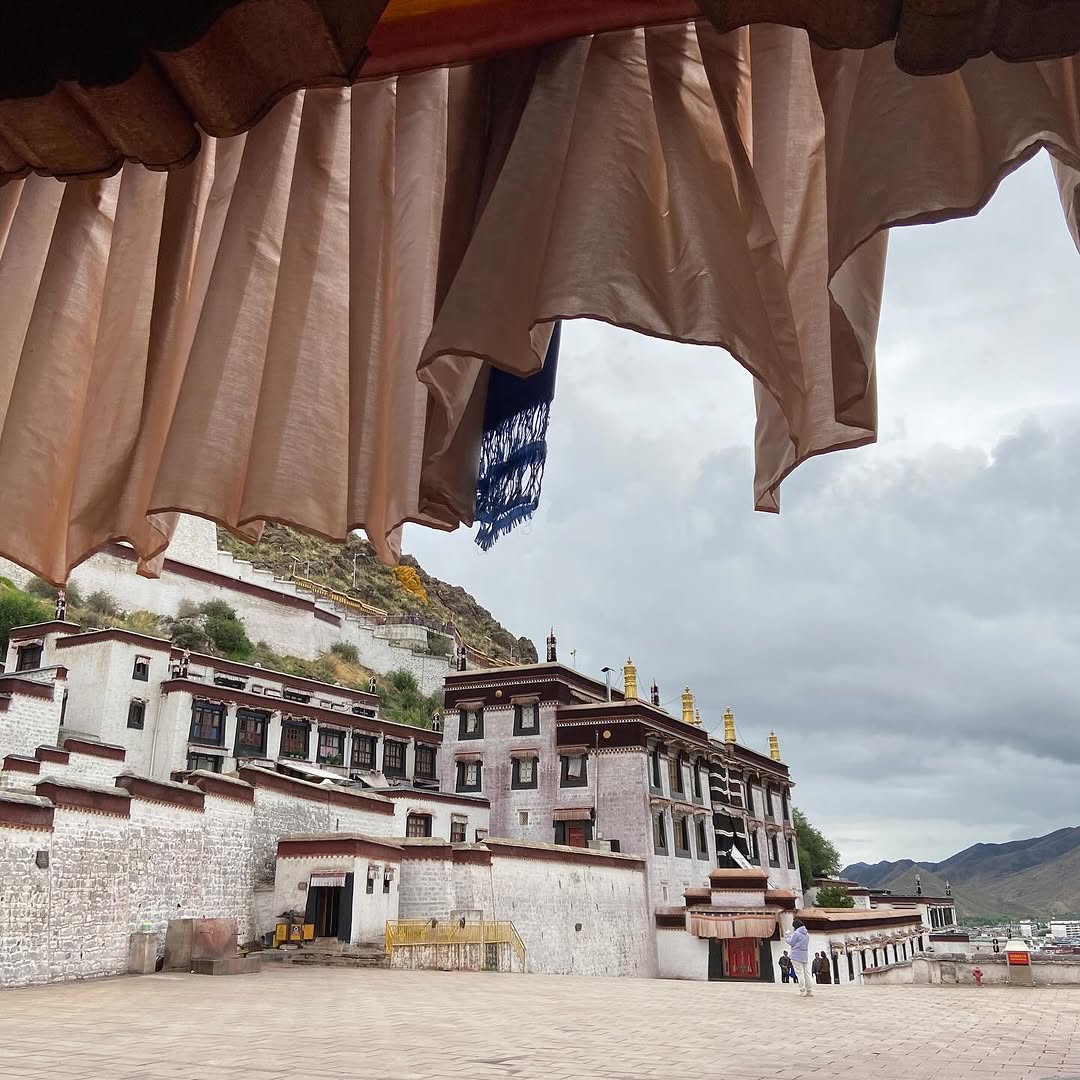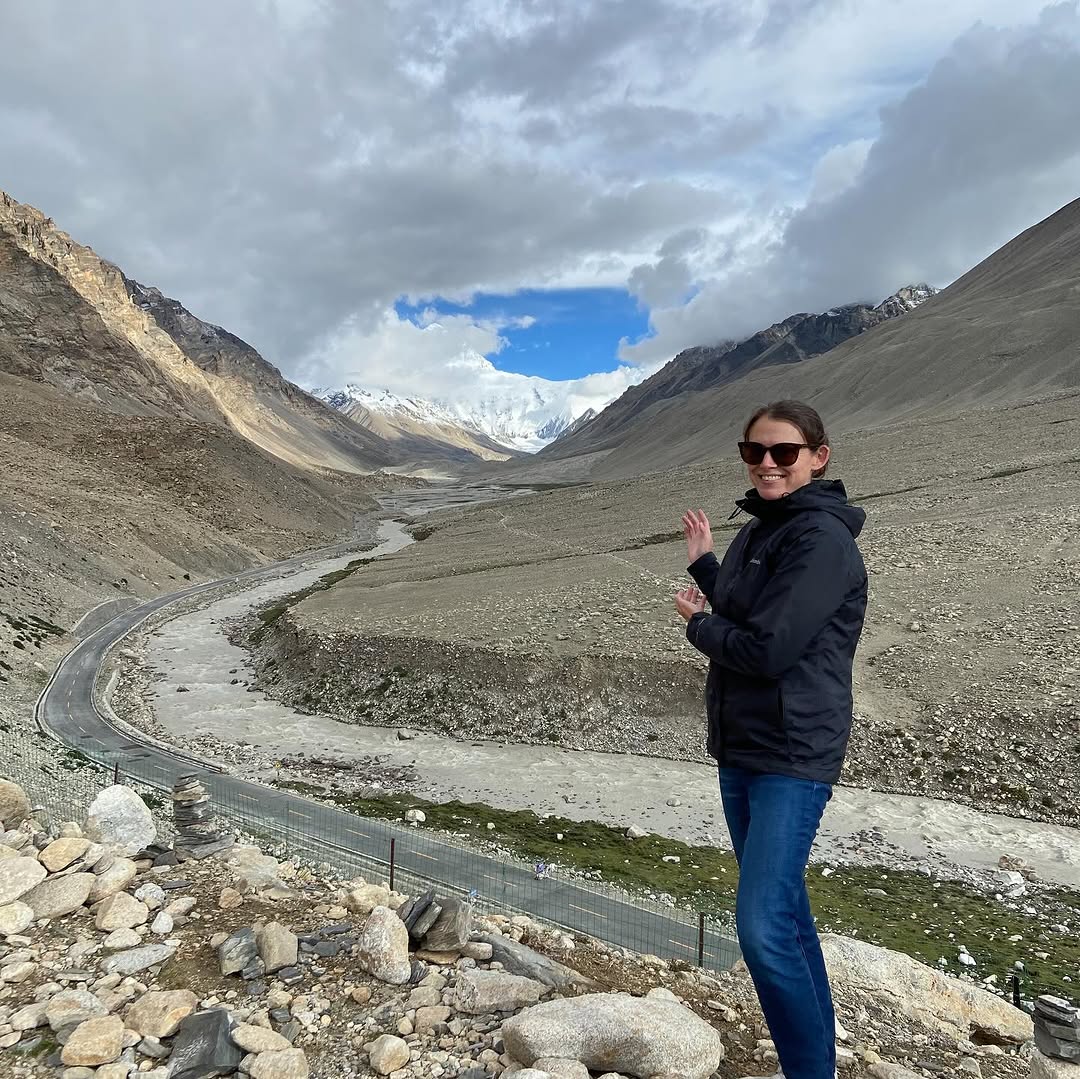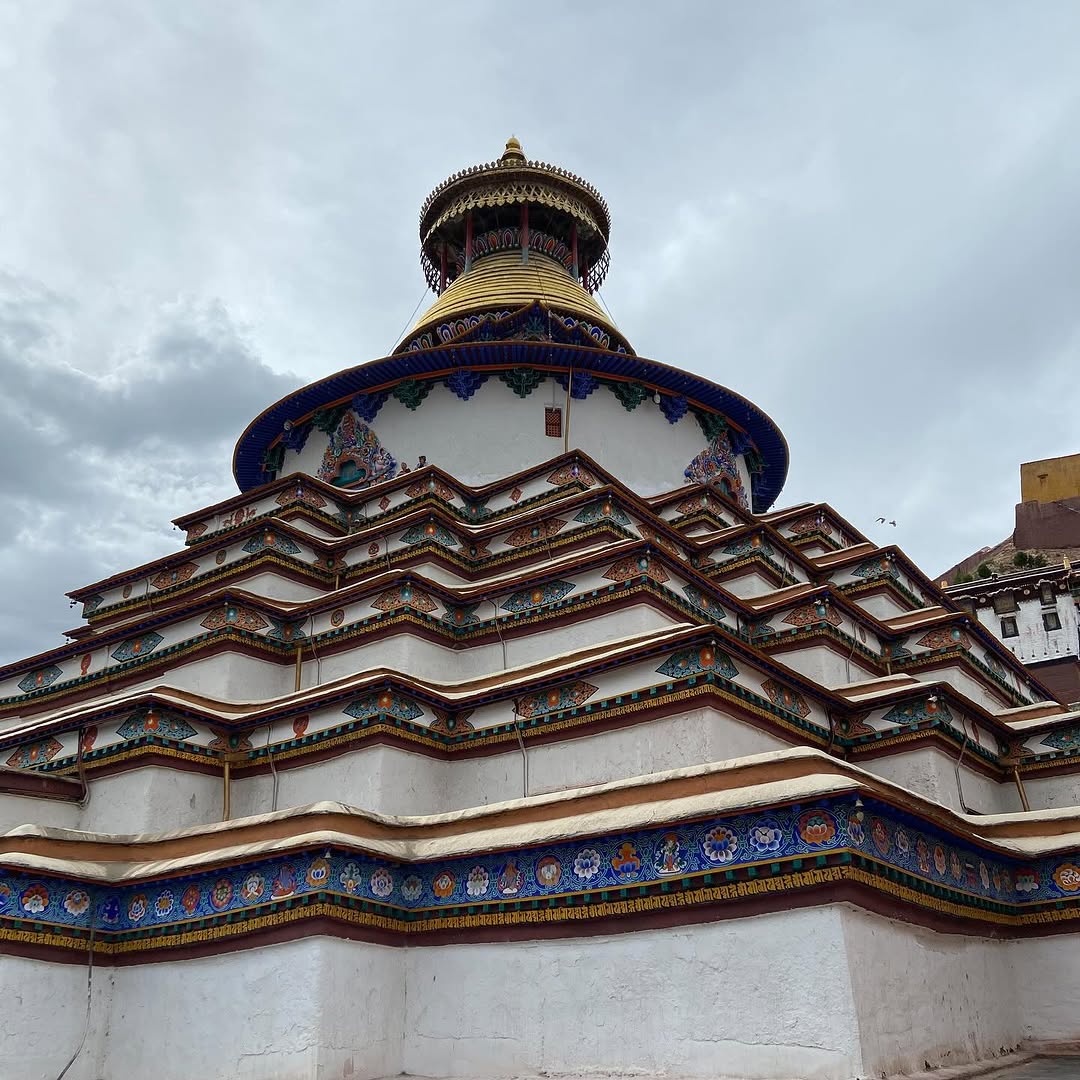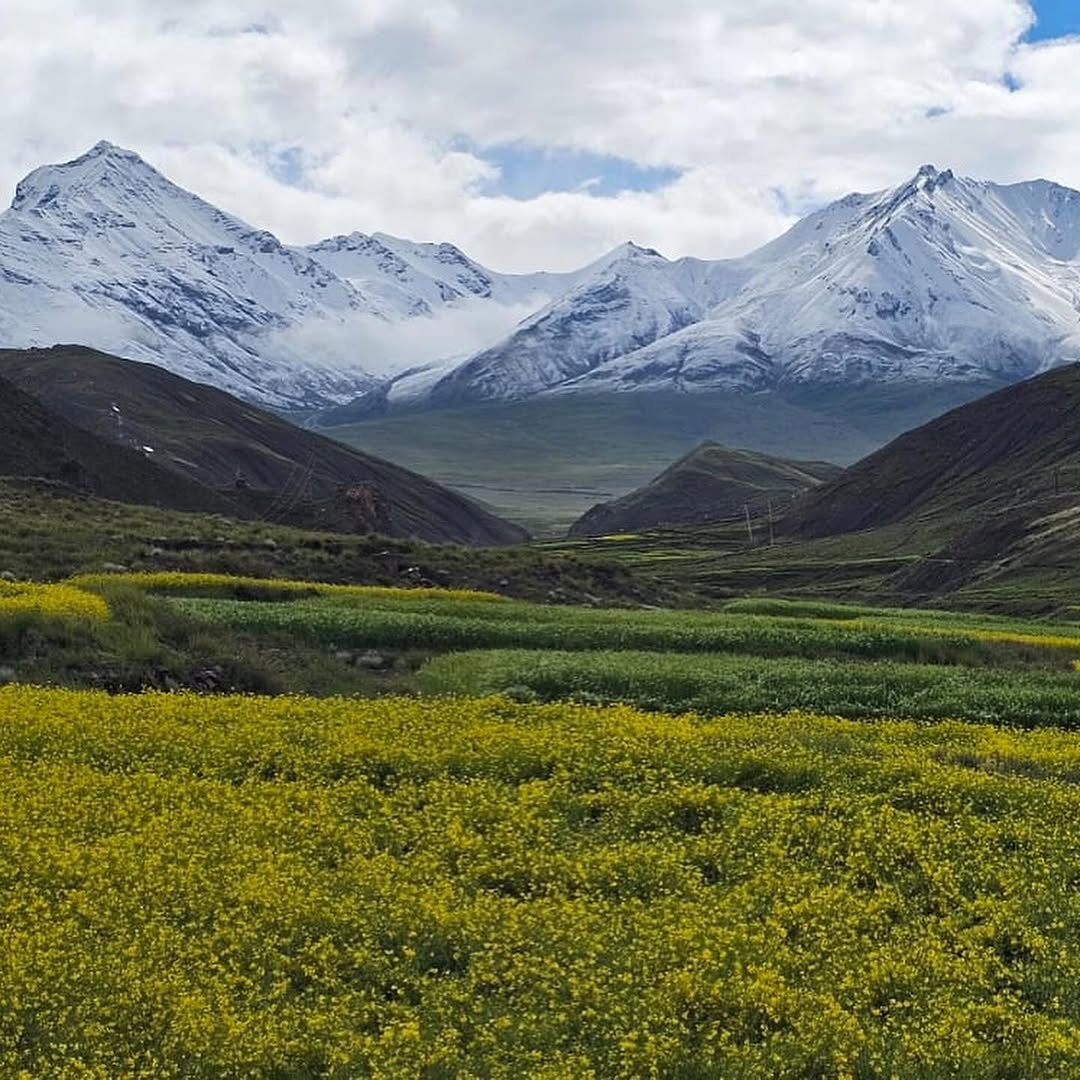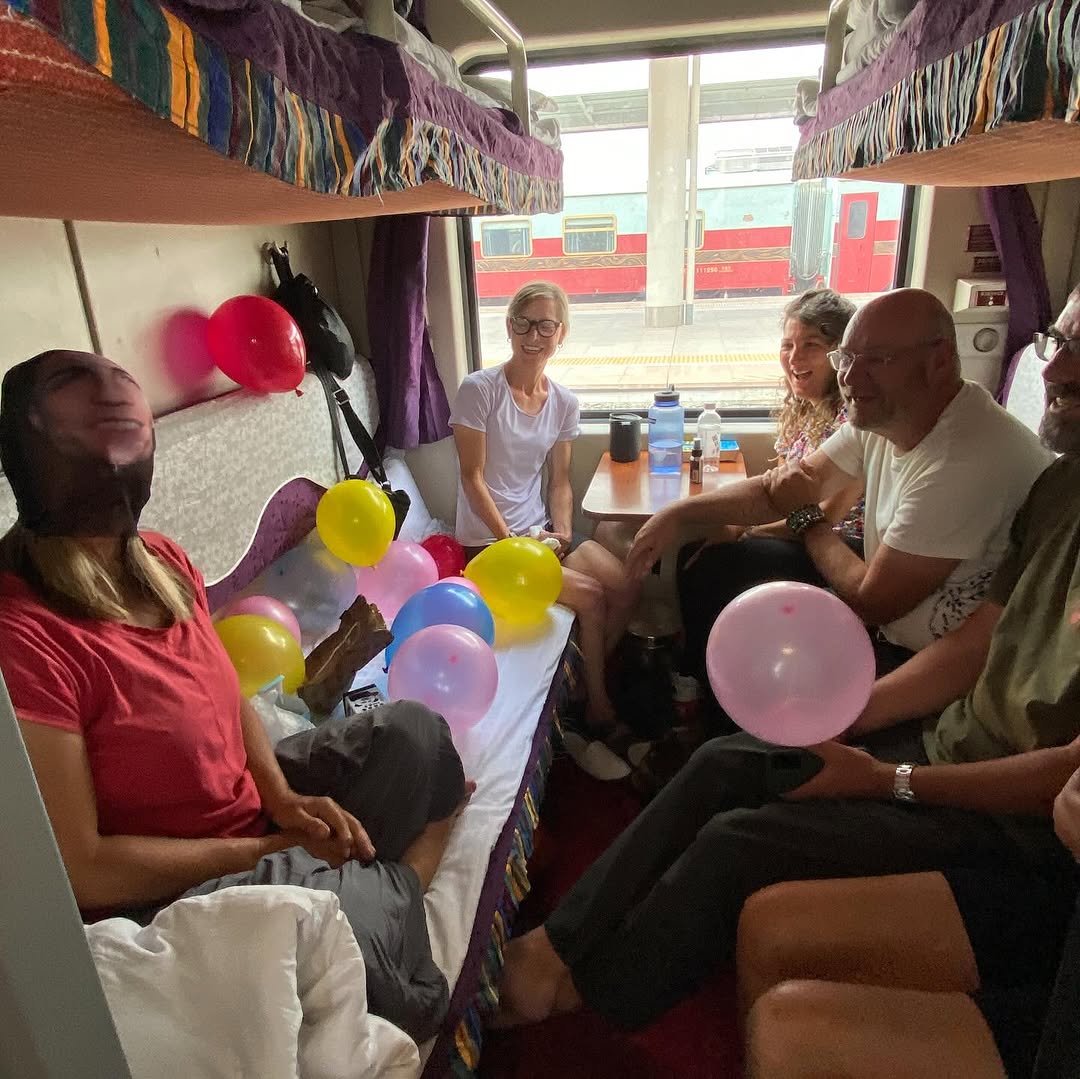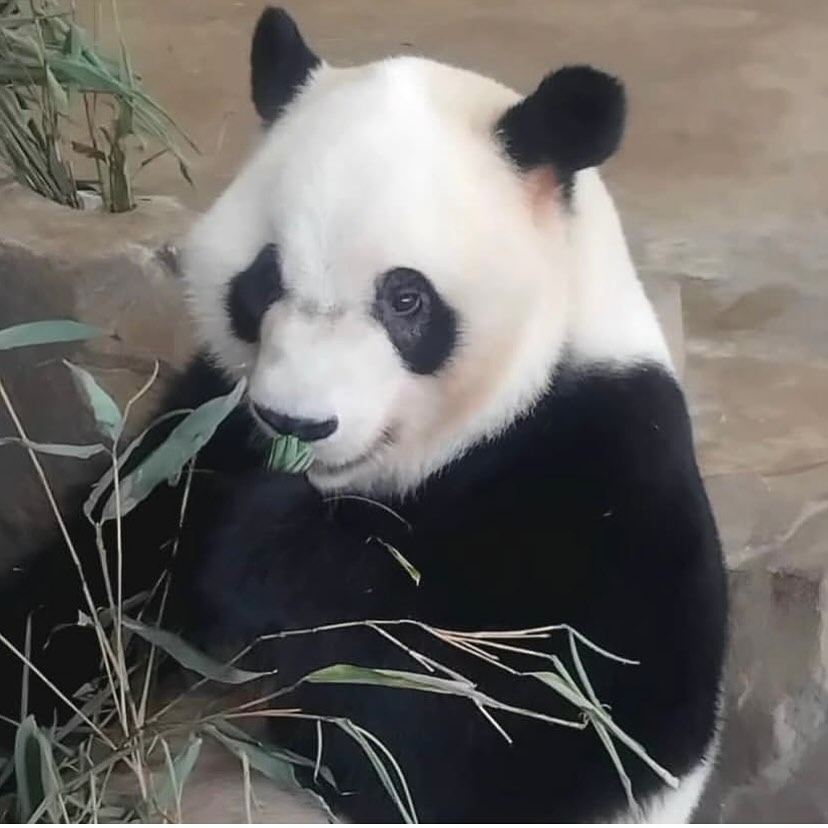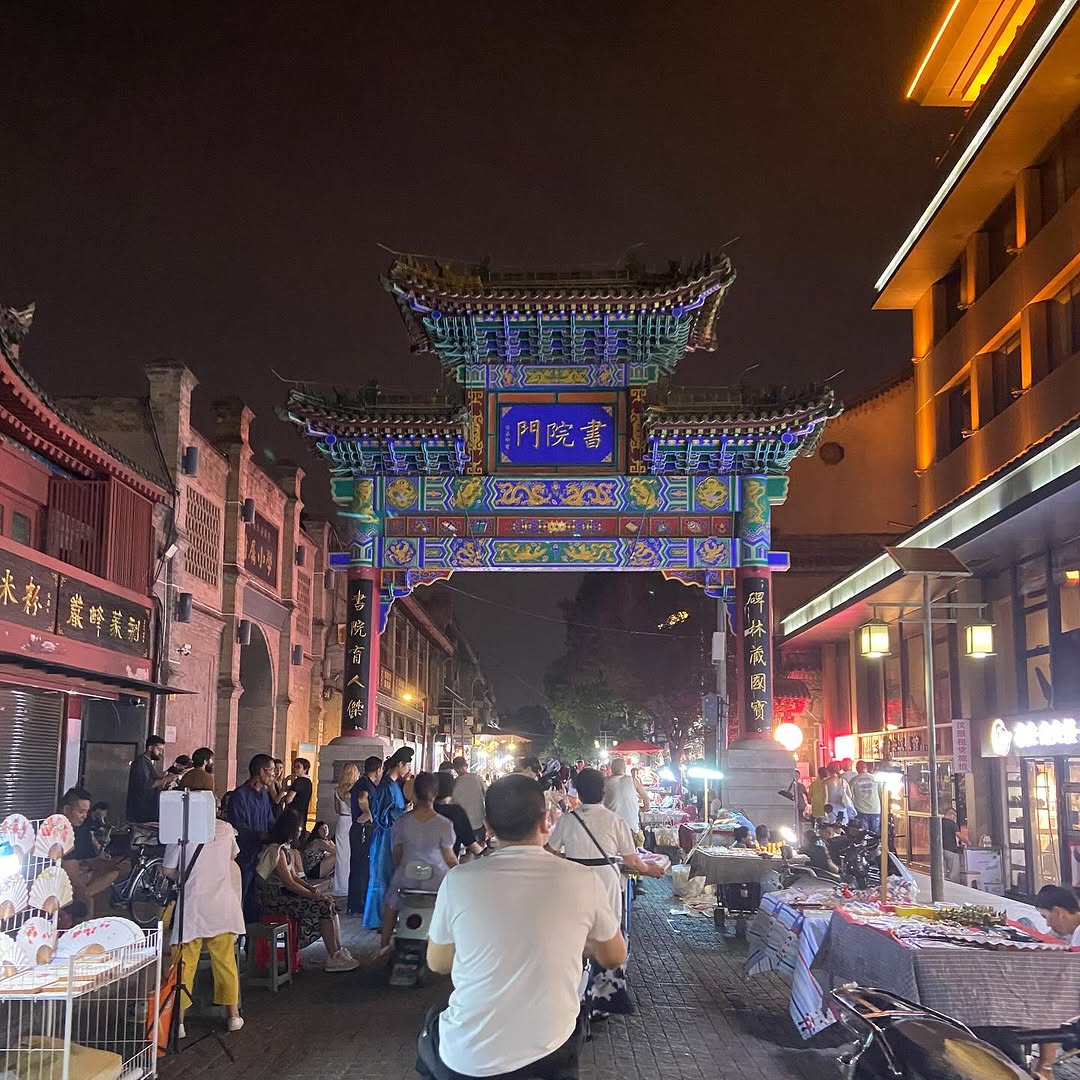- Details
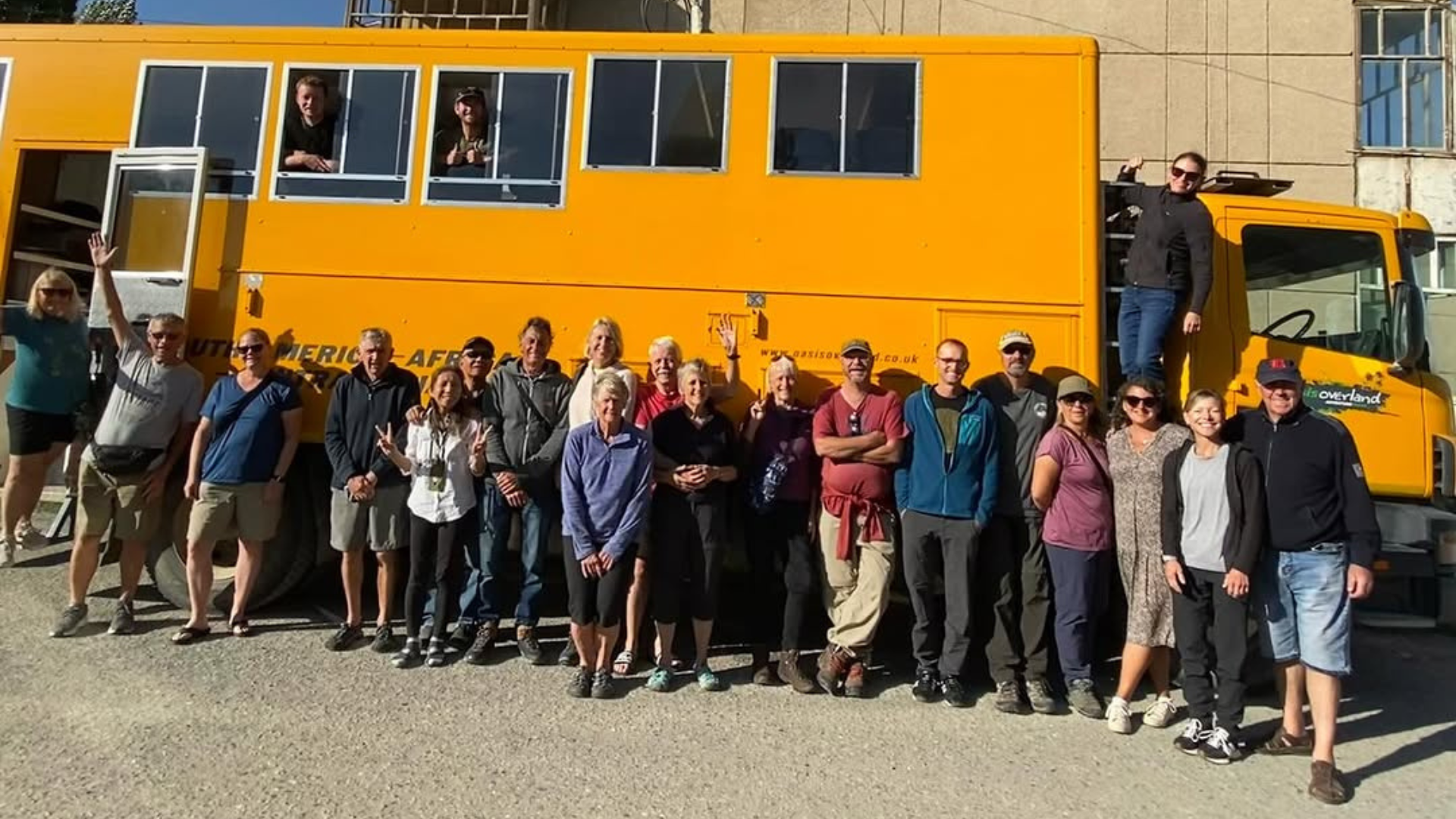
NARYN, KYRGYZSTAN TO KASHGAR, CHINA
This morning we said goodbye to Al and six others who were returning to Bishkek to end their trip. It was a sad farewell, but for the rest of us, a new adventure was beginning!
I’ve read accounts of this border crossing calling it “one of the sorriest, most problematic and adventurous border crossings in the world, complete with howling wind, chilly temperatures, excruciatingly long waits and the meanest officials.” Last year, I picked up a group from the final Chinese immigration hall and they had been stuck in the snow for several hours before even getting picked up on the Chinese side. Arrival time at the hotel in Kashgar that time was 2–3am.
I was prepared for a chaotic day—but you know what? It was surprisingly smooth. A very long day, yes—but smooth, with glorious weather.
We were picked up by two minibuses in Naryn, driven through beautiful scenery, completed a couple of passport checks before immigration, and then we were off to China. Things got a little slower from here. We had to wait at the main China gate at the Torugart Pass (3,800 meters above sea level) for our Chinese transport and guide. The bus had unfortunately broken down, but the wait was minimal and the guards only mildly stern.
The China portion takes ages. There are several passport checks and two immigration stops, both involving bag checks and lots of waiting. Between the two immigration checks, there’s 100km of very rough road to cover as well.
Thankfully, absolutely nothing went wrong. While we did arrive at the hotel at 11pm (thanks to now being on Beijing time), the sun had barely set and I was very pleased with how it all went.
Kashgar last year involved the world’s worst guide, so the agency upgraded us to a brand-new 4-star resort and—what a surprise—it was an over-the-top, Disney-style production. But the rooms were glorious and the food at the restaurant was excellent. My first Chinese meal was so good I didn’t stop to take a photo or even breathe. I’m very happy to be eating here again. Back in the land of spice!!
KASHGAR
Kashgar is a city with 2,000 years of history and one of the most important hubs of the Silk Road, where central and southern trade routes met. It borders Afghanistan, Pakistan, Kyrgyzstan, and Tajikistan and is geographically closer to Damascus than it is to Beijing. It’s surrounded by three mountain ranges and a desert.
Kashgar is located in Xinjiang—or officially, the Xinjiang Uyghur Autonomous Region. It’s the largest province in China and home to many ethnic minorities, most prominently the Uyghurs.
Visiting here is a bit of a shock after the wide-open spaces and more horses than people. Kashgar now feels more like a tourist trap than an ancient wonder at certain times of the day.
We began our city tour with the opening ceremony of the eastern gate of the old city, and it was a spectacle of awkward tourism—overcrowded and a bit intense—though I did love the experience and appreciated the over-the-top show. I love traveling in China and try to embrace every part of it.
We visited the “old old city”—a section that hasn’t been completely reconstructed—before heading to the Tomb of the Perfumed Concubine. While interesting and with some beautiful elements (it contains some of the finest samples of Islamic architecture in Kashgar), the heavy commercialization of the ancient world does take away a little of the magic.
That said, I won’t pretend it’s not fun and exciting to visit major tourist sites here. In some ways, they outdo America in their extravagance. It’s a lot to take in.
Lunch took a long time—my goodness, it takes forever for everyone to get their payment apps working and for the frustration to pass. I, however, was thrilled as I love eating in China and soaking it all in.
Our last stop was Id Kah Mosque, the largest mosque in the province—and in China. That’s not to say it’s enormous, but it’s an important site.
What I love about Kashgar is seeing all the cultural influences from our journey so far meet China—this unique blend on display. It’s a very fascinating and distinctive place.
KASHGAR TO DUNHUANG
Kashgar—and Xinjiang in general—has become an increasingly popular tourist destination, making it very hard to secure decent train tickets during peak season. That meant a change in itinerary and two days of mostly transit.
We left Kashgar in the morning on a hard sleeper overnight train and arrived in Dunhuang the following evening. A hard sleeper means six beds per compartment on this 21-hour train. Many were unsure about it, but I love Chinese trains and honestly, the hard sleepers aren’t that uncomfortable. There’s also something lovely about being allowed to sleep all day—especially after months of nonstop travel!
The human and cultural interactions you have on these trains are also pretty special. It’s hard to complain. That said, I discovered new parts of my body that ache after 21 hours of contorting on the top bunk.
Our next stop was Korla, the second largest city in Xinjiang, though we were only there to catch a flight to Dunhuang. We did have enough time for breakfast, a shower, a wander through Longshan Park, and lunch before the airport.
Longshan Park is the highest point in the city. It’s not the most amazing park, but it does have great views, a glass-bottom bridge, and a delightfully silly slide at the end! Add some carnival games—and I do love silly fun—so I was well entertained. Bonus: I won a panda!
The airport was mostly uneventful, aside from some stress over power banks (a new rule almost caused panic), but all was fine. A few hours later, we landed in the desert oasis of Dunhuang—greeted by one of the very few rain showers they get all year.
We ended these two travel-heavy days at the AMAZING night market—one of my absolute happy places. There are more food stalls than you can count, serving incredible things. Top-tier night market.
DUNHUANG
Our fantastic day in Dunhuang began with a visit to the Mogao Caves. These “Caves of a Thousand Buddhas” are among the greatest achievements in Buddhist art in the world! Constructed in the 4th century, they thrived for over a thousand years. It’s truly one of the most important historical and cultural treasures in China.
They show the evolution of Buddhist art and reveal a picture of life on the ancient Silk Road—highlighting the cultural, religious, and intellectual exchanges that happened along it. Unfortunately, photography isn’t allowed inside the caves, but they are deeply impressive.
Next, we headed to Mingsha Mountain and Crescent Lake, a stunning natural playground of sand dunes. I chose to take a helicopter ride over them—and wow, it was amazing. So much fun! It was a tiny little chopper, which made it fast and thrilling. The views over the desert were absolutely incredible. Another top-tier experience in Dunhuang.
Speaking of top-tier—the Ancient Sound of Dunhuang show was, in a word, mind-blowing. Totally unexpected. It starts with immersive theater in two holding rooms before the doors open to the main hall and everyone stampedes in for good seats. With adrenaline pumping and excitement building from the teaser shows, we all sat in anticipation—and the production was superb. Really world-class.
It was especially meaningful to see the show after visiting the caves—it helped place everything in a vivid cultural context. We ended the night back at the night market. Honestly, I could eat there forever.
DUNHUANG TO JIAYUGUAN
We took an early morning bullet train to Jiayuguan, home of the westernmost section of the Great Wall of China. It’s also a pleasant small city, and we had time to explore it.
But first—on arrival at our hotel, we saw there was a restaurant opening next door, and in classic fashion, this meant a ridiculous amount of fireworks in the parking lot. We were warmly welcomed in and treated to a fantastic lunch. Really kind people—it was great to be part of their celebration.
Later, I visited a cool café, enjoyed excellent food at plastic tables on the sidewalk, and even caught some live music at a local bar. A much-needed chill day.
There’s also a morning market next to our hotel, and it’s amazing—gorgeous produce and stalls full of unique artisanal products. Sadly, I have no photos—so imagine bright fruits, rare vegetables, and handcrafted goods sold wholesale. Bliss.
In the afternoon, we visited the Jiayuguan Pass section of the Great Wall. This is literally the western gateway of the Wall—the oldest section. While it has the usual touristy atmosphere, it’s still fascinating to stand in a place with such rich history.
Tomorrow, we begin our long journey to Lhasa!
JIAYUGUAN TO LHASA
We caught a late afternoon bullet train from Jiayuguan to Xining in Qinghai Province. Unfortunately, we didn’t have time for much except a quick bowl of famous Lanzhou beef noodle soup before boarding the iconic high-altitude train to Tibet.
This journey is well over 20 hours, but it's very comfortable and offers spectacular views—rolling grasslands, snow-capped peaks, and, of course, what felt like a million yaks.
Unfortunately, most of it is really hard to photograph through smudged windows and with phone cameras, so apologies for the blurry pics.
We arrived in Lhasa in the evening, giving us just enough time to see the city beautifully lit up before settling in and adjusting to the altitude.
I think everyone’s still pinching themselves. Time to explore Tibet!
LHASA
This morning, we visited the Potala Palace—a place that feels almost mythical, the kind you dream of visiting but never think you’ll actually reach. And yet, here we are!
Even having been before, it still feels surreal. This winter palace of the Dalai Lama has stood since the 7th century and is the highest palace in the world. It’s Tibet’s most iconic monument and a deep symbol of national identity.
While crowded with tourists, it remains sacred—attracting thousands of pilgrims who perform the Kora (a spiritual circumambulation) here.
Afterward, we had a delicious momo lunch, then visited Jokhang Temple—the most sacred in all of Tibet. It’s the oldest temple in Lhasa and the ultimate pilgrimage site.
It feels strange taking photos while pilgrims are prostrating themselves on the ground outside, but it’s a powerful experience to witness.
The old town of Lhasa is an incredible place to wander and soak up everyday life. Despite the modern cafés and KFCs, real life still unfolds around you—spiritual, vibrant, and completely unique.
We also celebrated another birthday today with dinner at a lovely spot overlooking the Lhasa River and Potala Palace. A perfect end to our stay.
LHASA TO SHIGATSE
A short drive through dreary weather brought us to Shigatse, Tibet’s second-largest city and home to Tashilhunpo Monastery.
Founded by the first Dalai Lama in the 15th century, it’s one of the most significant monasteries in Tibet. Unlike Potala or Jokhang, it has fewer tourists and is filled with locals and monks—over a thousand live here.
You can truly feel the spiritual energy and sense the antiquity of the place. The monastery also houses the world’s largest copper statue, which survived destruction thanks to clever locals disguising it as food storage.
Sadly, since it was Sunday, we missed the monks’ evening chanting—but the experience was still special.
The city of Shigatse itself is quite pleasant. We had a lovely dinner out. With so few Westerners around, people are curious, kind, and welcoming—you leave places with new friends.
Not even the rain could spoil the day! (Well... except for my mild panic about tomorrow’s Everest weather.)
Bonus: Our hotel had a traditional Tibetan design and a cat Assistant Lobby Manager. Adored it.
SHIGATSE TO EVEREST BASE CAMP
We awoke in Shigatse to gorgeous blue skies, giving me hope for clear days at Everest. The drive offered a mix of sun and rain, and it really started pouring as we crossed the 5,200-meter mark, inching closer to the base camp. But then—we got so lucky.
We arrived to nearly clear views of Everest, beautiful weather, and a cozy, delicious hot pot dinner. The next morning gave us an unbelievably clear view of the mountain. Pure magic.
I visited Rongbuk Monastery—the highest in the world—on my own, and there was no one else around. Just me and the sound of monks chanting their morning prayers. A surreal and spiritual moment, capped off by stepping outside to find a yak standing right in front of me as the clouds pulled back from Everest again. One of those experiences that just roots itself in your soul.
Sleeping (and just existing) at 5,000 meters isn’t easy, and our oxygen canisters definitely came in handy overnight. But we all handled the altitude really well. Honestly, this stop was a major life highlight. I mean… it’s EVEREST.
EVEREST BASE CAMP TO TINGRI
We spent the morning just staring in awe at Everest before hitting the road. This was mostly a transit day—a connection point between base camp and Gyantse—but we still had time to pause at the 5,200-meter pass for some more spectacular views (this time, no rain!).
We reached the small town of Tingri for a late lunch and a chilled Lhasa beer, followed by some quiet time to recover from the altitude (still 4,300 meters!) and lack of sleep. A simple, peaceful stop.
TINGRI TO GYANTSE
We began the day by driving over the highest pass of our trip—5,248 meters! For someone born at sea level and raised for warmth, this was wild and awesome. It really hits you—you’re at the roof of the world in the highest country on Earth.
Our final monastery visit was at Pelkor Chode, home to the largest stupa in Tibet, the Kumbum. The site is special for many reasons, including being a compound of multiple monasteries and a place where all three sects of Tibetan Buddhism are practiced. Truly unique.
The Buddhist art here is stunning—very different from what we’d seen before. The stupa itself is just incredible. You can climb up inside and take in beautiful views of Gyantse and its towering fortress.
We wrapped up by walking through the village to our hotel. The vibe of the town, the architecture, the people—it was a true highlight. A perfect final stop in Tibet.
GYANTSE TO LHASA
What a drive! Last year the Karola Glacier was completely hidden by clouds, but today we had blue skies and endless views of glaciers and snow-capped peaks. Just epic.
We also stopped at Yamdrok Lake, one of the three holy lakes of Tibet. There’s a beautiful (and intense) myth attached to it: A young girl once bathed in the lake and caught the eye of a rich man who tried to kidnap her. A fairy appeared and beat him to death—but he refused to let go of her, and they both sank into the lake. Later, villagers found only his body, and a white bird flying out of the water. Legend says the fairy turned the girl into that bird, which is why the lake is full of them today.
The viewpoint is very touristy, and I felt for the yaks, baby goats, and Tibetan mastiffs used for tourist photos. Still, it was incredibly beautiful. This was also our last time above 5,000 meters.
After a few more scenic stops, we descended back to Lhasa and went straight to the railway station to board the high-altitude train to Chengdu—our second ride on this legendary railway, this time for 36 hours!
LHASA TO CHENGDU
Well... this day went completely off the rails—again!
We did make it on the train this year, unlike last time, and settled in for the long journey. But about 18 hours in, we learned that the Xining to Chengdu section had been canceled. Total surprise—and we were just a few hours from Xining with no backup plan yet.
To make things worse, right after hearing the news, we entered the longest tunnel of the whole route and lost cell signal. Naturally.
Long story short: Our guide sprang into action. Transport was arranged in Xining, flights were booked, and a hotel near the Chengdu airport was secured. The flights were very delayed, of course—but we finally arrived in Chengdu, exhausted but still laughing, about 36 hours after leaving Lhasa anyway.
But the train journey was gorgeous while it lasted. One of the best sunrises of the trip (though photos didn’t do it justice). And hey—everyone made it, and we got to sleep in top-tier beds that night. Major win.
CHENGDU
Chengdu might just be my favorite city in China. It’s a mega-city with 22 million people, but somehow feels much smaller and cozier. It’s known as the happiest city, the greenest city, and the reading capital of China.
That last one hit home when I walked into a four-story mall full of only books, and it was packed with people. It had real charm—and vibes for days.
Of course, Chengdu is also panda central! This city is obsessed with pandas in the best way. Panda-themed everything, and somehow none of it feels tacky. You just can’t be mad at that level of cute.
Since we’re in Sichuan Province, hot pot was a must—and it did not disappoint. We followed that with one of my favorite local experiences: KTV (karaoke in a private room). It’s ridiculously fun, and the perfect group bonding night.
Big shoutout to our guide Nancy, who went way above and beyond for us. Day one in Chengdu? Perfect.
CHENGDU TO XI’AN
Bullet train time! We were in Xi’an by the afternoon.
Another favorite of mine, Xi’an has a smaller population than Chengdu (just 13 million), but it doesn’t feel small in scale, energy, or history. It’s home to the Terracotta Warriors and delivers on that epic vibe.
That evening, we joined a tuk-tuk food tour—and it was fantastic. Xi’an is a culinary hotspot, and this tour took us to hidden gems, each better than the last.
We started with the city’s famous BBQ skewers—lamb, beef, tendon—loaded with chili and cumin. Then came biang biang noodles, hand-pulled and thick, best with chili oil. After that, we devoured Xi’an-style soup dumplings at a legendary spot.
But the best stop was a hidden restaurant tucked deep in a residential alley—an oasis filled with plants, antiques, and absolutely insane food.
The star dish? A whole chicken, prepared in three steps: boiled, steamed, and finally fried. The result: tender, juicy, and packed with umami-rich flavor, just the way I love it—almost too salty in the best way. It was served with a mild pepper powder, and paired with a wood ear mushroom and walnut salad, plus a refreshing carrot salad and fried bread. Ridiculous.
We wrapped up at a craft brewery, where I had my first hazy IPA in ages—delicious. I’d heard about a Cuban bar nearby and went to check it out. The connection to Cuba was mostly just a flag and a menu of food that wasn’t actually available… but still, it was fun!
What a start to Xi’an.

